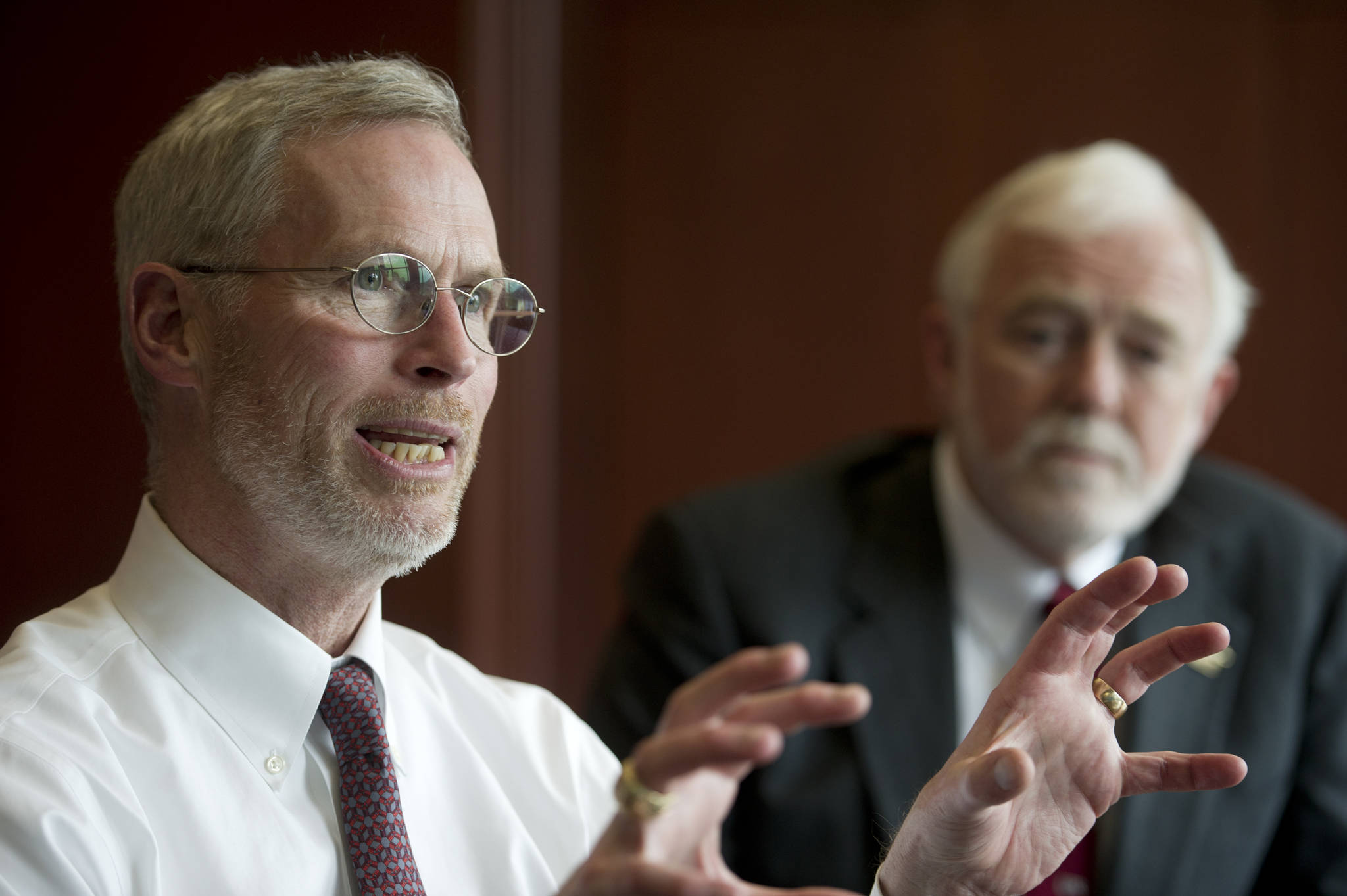University of Alaska President Jim Johnsen on Thursday released a video where he acknowledged his role in contributing to a “fractured” university system. In the video Johnsen says that he has been able to reflect on his management of the restructuring process.
“What I’ve learned is that I stayed in that crisis mode that I was in over the spring and summer, trying to fight off that huge budget cut, and I didn’t adjust to our new, still urgent, reality,” Johnsen said in the video.
The video was released after an emergency meeting Monday where the University of Alaska Board of Regents voted to delay consideration of consolidating the university system into a single accredited university.
At the meeting, the regents held a closed door executive session where it decided to halt the consolidation process until after UA Fairbanks had completed its accreditation process in 2021, as well as to suspend the academic review processes that had been taking place systemwide.
The restructuring process began after the administration of Gov. Mike Dunleavy announced massive cuts to the state budget, originally proposing $136 million cut from the UA system. In August, Dunleavy signed an agreement with the Board of Regents which would cut only $70 million and over a three-year period. In exchange, the regents agreed to a number of cost-cutting measures such as increased online classes and reduction of administrative overhead.
The decision to halt consolidation came following a Sept. 30 letter to the Regents and Johnsen from the Northwest Commission on Colleges and Universities (NWCCU), the local accrediting agency, expressing concern at the manner in which the University of Alaska’s restructuring was taking place.
“NWCCU remains concerned about the long-term consequences of reduced funding as it relates to student learning and educational attainment,” the letter says. “In reviewing recent media coverage and based upon the feedback from stakeholders, we are concerned that the (three UA universities) have failed to meet the above critical Standards for Accreditation.”
On Oct. 5, the University of Anchorage Faculty Senate reaffirmed their vote of no confidence in Johnsen. The Faculty Senate had previously voted no confidence in Johnsen in 2017.
“There’s been an ongoing issue with the president,” said Scott Downing, UAA Faculty Senate President told the Empire in a phone interview Friday, “not including faculty in shared governance in a meaningful way. Johnsen has been running things from the top, which is against NWCCU regulations.”
Lack of involvement of faculty and staff was cited in the NWCCU letter as an area of concern.
“We also respectfully urge you to continue to create a space for inclusive dialogue as the Board of Regents deliberates on the future structure of the University of Alaska System,” the letter states.
Downing told the Empire that the academic review process had been a source of concern for faculty and students.
“There was a single faculty member to represent multiple disciplines,” Downing said. “They’re supposed to be checking with faculty for suggestions but (one faculty member) doesn’t ensure representation.”
Board of Regents Chair John Davies released a statement Monday saying that the board had made its decision “now that circumstances have changed.” In the statement, Davies said “we are committed to work diligently to resolve NWCCU’s concerns and to rebuild the trust that has been damaged in this difficult fight for survival.”
Downing said that he and the faculty senate at UAA were not necessarily swayed by Johnsen’s video.
“He’ll need to have an ongoing commitment to inclusive decision making,” Downing said. “It’s been an issue for some time and we think we’re going to have to see a different approach.”
University of Alaska Southeast Chancellor Rick Caulfield told the Empire in an email Friday that UAS completed its accreditation process in June and had received a positive report from NWCCU.
Caulfield said that the university had not yet made any decisions regarding program review and that those processes were just beginning.
“UAS is moving forward with such reviews, focusing on ways of enhancing, consolidating, or streamlining programs and reducing costs,” Caulfield said in the email. He said that results of the reviews would be done, “no later than early 2020.”
Asked if he shared concerns about Johnsen’s leadership, Caulfield said, “President Johnsen has acknowledged publicly that the speed of the proposed restructuring had contributed to fracturing of university support, that he has reflected on his role in that process and learned from it, and that he is committed to an inclusive process moving forward.”
The Board of Regents plans to meet again toward the end of October, according to the Associated Press. Johnsen could not be reached for comment Friday.
• Contact reporter Peter Segall at 523-2228 or psegall@juneauempire.com.

